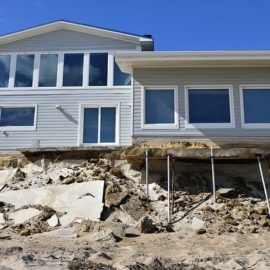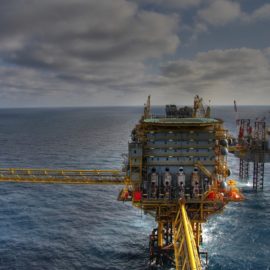
The Miami condo disaster has impacts here as it makes money harder to find. So says Bob Marshall.
How does the tragic collapse of a beachfront condo in Florida impact Louisiana’s coastal survival plan? It increases the already stiff competition the state faces in its desperate search for funding that plan. Let me explain. The dust was still rising from the horrible condo collapse when the search for a cause began turning to climate change. However, we quickly learned a building inspector had warned of foundation problems in 2018 — and climate experts said they would wait on a complete forensic engineering investigation to claim any links. But the climate suspicions kept coming, not from “climate hawks” but from local residents and political leaders. And their questions were not based on political affiliations, but on what they have experienced in their seaside lives over the past decade.
nola.com
Limestone. Porous limestone. Some of this limestone was covered with sand used to fill the drained mangrove swamps that used to be there. This was a minor concern until 10 years ago when the oceans started to rise.
The sheer weight of the ever-larger ocean now routinely pushes water through the hole-strewn limestone and sand underlayers. Residents now find streets and underground parking areas flooding on blue-sky days. They watch beaches steadily surrendering width to the Atlantic. And they see storm surge from even minor hurricanes becoming higher and reaching further inland. The increased flushing action of the tidal flows burrows away at soil layers under buildings and streets, which can cause dramatic and sudden sinkholes. And the heavy salt content from the Atlantic causes corrosion in the iron rebar used to give strength to concrete pilings and other supports. Engineers have been finding signs of this damage for years, setting off calls for help from the affluent owners of the expensive beachfront investments. In fact, Florida’s Republican legislature and governor — who for a decade stuck to the GOP orthodoxy that climate change was either a hoax or exaggerated — this year did an about-face, passing a $1 billion climate resilience plan. Indeed, last week the mayor of Key West, Michelle Coldiron, made a pronouncement that is finally being accepted as truth across Red America: “The water is coming and we can’t stop it.”
With this message, all up and down the Florida coast cities were asking for salt water intrusion studies and monies to fix this problem. Florida is not alone as cities in coastal states are asking for monies for levees, floodwalls, home flood-proofing such as raising houses and, as a last resort, buy-outs. This sounds familiar to what we are doing here. We are just ahead of the curve.
So how does this present a challenge to Louisiana’s desperate search for a permanent funding source of at least $1 billion a year for the next 46 years to keep its coastal master plan on schedule? The competition we face for those dollars just grew exponentially. We’re like the quarterbacks in Tampa Bay last year when Tom Brady showed up. Congress decides how to spend the public’s money. Beginning in 2022, Louisiana will have eight votes in congress. Florida gets 30. Which state do you think will have more influence on where dollars are spent? That’s not all. Starting in 2022, 13 of the 23 coastal states have more votes in Congress than Louisiana. Here’s the lineup we’ll be facing: California, 54. Texas, 40. Florida, 30. New York, 28. North Carolina, Georgia, 16. New Jersey, 14. Virginia, Washington, 12. Massachusetts, 11. Maryland, 10. South Carolina, Alabama, 9. This doesn’t include the eight Great Lakes states, each of which has more votes than Louisiana.
We had a plan, we had started on it, we had the lead. But not any more. Time is short to solve the problem and we know the solution – reduce emissions. There is not time to lose we must act.



